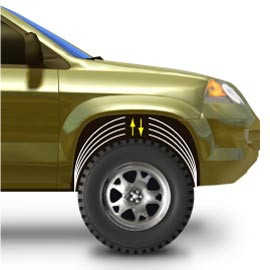Variable Ride-Height
Newest Technologies

VRHS systems exist under many trade names, including Electronic Height Control (EHC), Active Height Control (AHC), and pneumatic suspension systems.
HOW VRHS WORKS
In general, during off-road, lower-speed conditions, the vehicle will ride higher to allow for increased ground clearance. During on-road, higher speed conditions, the vehicle will ride lower. The vehicle riding lower by several inches is less top-heavy, has a higher SSF, and is less likely to roll over in a crash.
What is a Static Stability Factor (SSF) and how is it computed?
The Static Stability Factor (SSF) of a vehicle is an at-rest calculation of its rollover resistance based on its most important geometric properties. SSF is a measure of how top-heavy a vehicle is.
A vehicle's SSF is calculated using the formula SSF=T/2H, where T is the "track width" of the vehicle and H is the "height of the center of gravity" of the vehicle. The track width is the distance between the centers of the right and left tires along the axle. The location of the center of gravity is measured in a laboratory to determine the height above the ground of the vehicle's mass. The lower the SSF number, the more likely the vehicle is to roll over in a single-vehicle crash.


